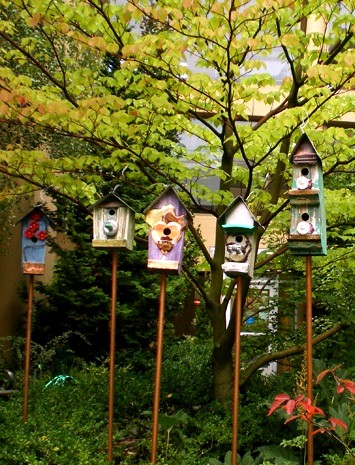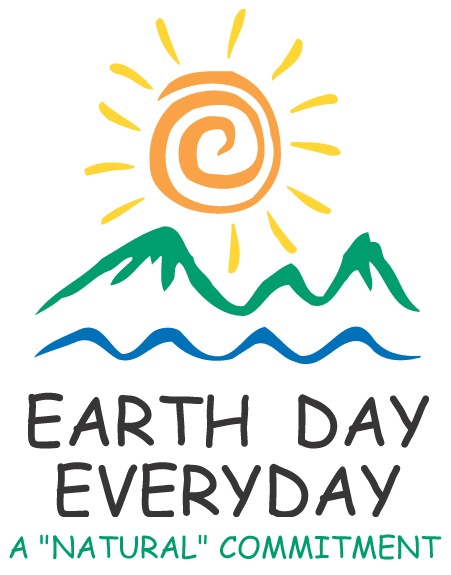|
|
|
Hansen's Northwest Native Plant Database |
|
|
Green Living Natively |
||||||||||||||||
|
In olden times, every part of every item was used and
re-used until it was worn out. This was true of plants and animals, minerals
and rocks, even the sun and moon and stars in the sky. The R's we are
learning about nowadays were ways of life--reduce, reuse, recycle, recover,
repurpose--though man's choices have not always been the best for our
planet, waste was consciously avoided. The circle of life is rephrased by each generation. "Waste not, want not." "What goes around, comes around." "When we know better, we do better." The Pete Seeger song, "Turn! Turn! Turn! (to Everything There is a Season)" written in 1959 and later covered by The Byrds taught us anew the ancient words from the Bible. Ecclesiastes 3:1: To every thing there is a season, and a time to every purpose under the heaven. In the garden, we use broken glass and mirrors as mulch. We use chunks of driveways and patios to make walkways through the plants. We toss old sheets over tender plants when the weather turns frozen. We allow trimmings from salads and branches from shrubs and leaves fallen in autumn to mix together and ferment into rich humus, returning the nutrients to their starting point. Inspired ideas: If you have a bad day, nothing is working, visit To Make You Smile where you will see "Functional Art with a Hole in it" at www.tomakeyousmile.com/birdhouses.html |

Legacy Emanuel Children's Hospital Therapy Garden Birdhouse Donation |
|||||||||||||||
|
Seasonal Green Ideas of 'green' (i.e. ecologically sound) ways to handle events and traditions common to specific seasons. Here are ways to use native plants instead of exotic/invasive to good advantage for us all. |
 |
|||||||||||||||
|
Stuff Every now and then we have something left over that is not easy to get rid of. We can surrender and pitch it in the trash, or we can use our ingenuity and discover new ways to re-purpose those leavings. If you have one of these square pegs for which you have no round hole, see the whole article at www.oprah.com/home/Where-to-Get-Rid-of-Clothing-Toys-Old-Phones-and-More/25#ixzz204tB5XU6 . Where to Get Rid of Anything Where to donate, recycle, and sell your castoffs so they do some good. By Katie Arnold-Ratliff and Meredith Bryan |
||||||||||||||||
If you find these creations interesting, go to www.worldisround.com/articles/217755/index.html and take a peak at GLASS BOTTLE TEMPLE STRUCTURES by kevin khaw. This is an incredibly beautiful pictorial of wine bottle creations by masters of the craft. "The Glass bottle structures are part of a Thai Temple structure located in Kedah. There are tens of thousand of glass bottles lining the temple structures, surrounding fences. The temple attracts lots of devotees who pray for blessings." |
Wine bottle fence
Cold frame from wood pallets and old window
Bird bath of glass and pottery |
|||||||||||||||
| And more! Here is a state by state list of places to donate old clothes, furniture, cell phones—even bridesmaid dresses: www.oprah.com/home/Where-to-Get-Rid-of-Your-Stuff | ||||||||||||||||
|
Junk Mail Every year the resources thrown away to produce junk mail is enormous. In just the United States, junk mail takes 96 million trees and 10 to 24 billion gallons of water are used to produce the paper for a response rate of around 2 percent. The EPA reports that more than 4 million tons of junk mail are produced, and more than 50 percent of this unsolicited mail is not recycled--it ends up in landfills. An estimated $320 million of local taxes are used to dispose of junk mail annually, and transportation of junk mail costs about $550 million per year, not to mention the air pollution generated during transport. There are services set up to help us get rid of this nuisance.
More ideas, see these websites:
|
||||||||||||||||
|
Telemarketing Speaking of junk mail, if you are still getting those dinner time phone calls there is action to take here as well. The Oregon State Attorney General's office (www.doj.state.or.us/consumer/telemarketing.shtml) has this to say:
Photo credit: Kornelia und Hartmut Häfele |
 |
|||||||||||||||
|
Wasting Time Daylight savings time comes and goes regularly (like clockwork). I personally hate it but right now most of the U.S. uses it so for self-preservation and to maintain sanity it's probably a good thing to use the same timetable as everybody else does. A lot of gadgets manufactured in the past 10 years to so will automatically change themselves when the switch happens. (See table below for just when that is.) The U.S. Naval Observatory Astronomical Applications Department is the official timekeeper of the United States. Read their mission statement at http://aa.usno.navy.mil/about/staff/docs/mission.php. This is their information about Daylight Savings Time:
http://aa.usno.navy.mil/faq/docs/daylight_time.php/
|
||||||||||||||||
|
Saving Money Trees: The value of trees in the landscape is unquestionable. Studies done around our continent have proven that one single mature tree in the garden can increase the value of the home by 3 percent. When properly placed, trees provide shade and help to keep the house cool. In winter the same tree can serve as a windbreak and may reduce heating costs by as much as 30 percent. Imagine that! See the Northwest Native Plant Journal March 2006 issue for some cold hard facts: www.nwplants.com/information/emag/vol4-1.pdf Light Bulbs: Replace incandescent light bulbs with compact fluorescents. There's a style and type to suit every light fixture inside and outside, including lamps. One caveat--this type of bulb does not work with some, if not all, dimmers. Switching to CFL's is a simple act everybody can do and the results are astounding: ENERGY STAR qualified bulbs use about 75 percent less energy than standard incandescent bulbs and last up to 10 times longer. Save about $30 or more in electricity costs over each bulb's lifetime. Produce about 75 percent less heat, so they're safer to operate and can cut energy costs associated with home cooling. If every American home replaced just one light bulb with an ENERGY STAR qualified bulb, we would save enough energy to light more than 3 million homes for a year, more than $600 million in annual energy costs, and prevent greenhouse gases equivalent to the emissions of more than 800,000 cars. See www.energystar.gov/index.cfm?c=cfls.pr_cfls |
This young Madrone (Arbutus menziesii) could add over $1,000 to your home's value in 5 years |
|||||||||||||||
|
This list is subject to growth and change as education continues and new opportunities become available. Come back and visit often. If you have ideas for good ways to love our earth, please email them to me: star@chillirose.com. I'll update this site from time to time with your ideas. |
||||||||||||||||
|